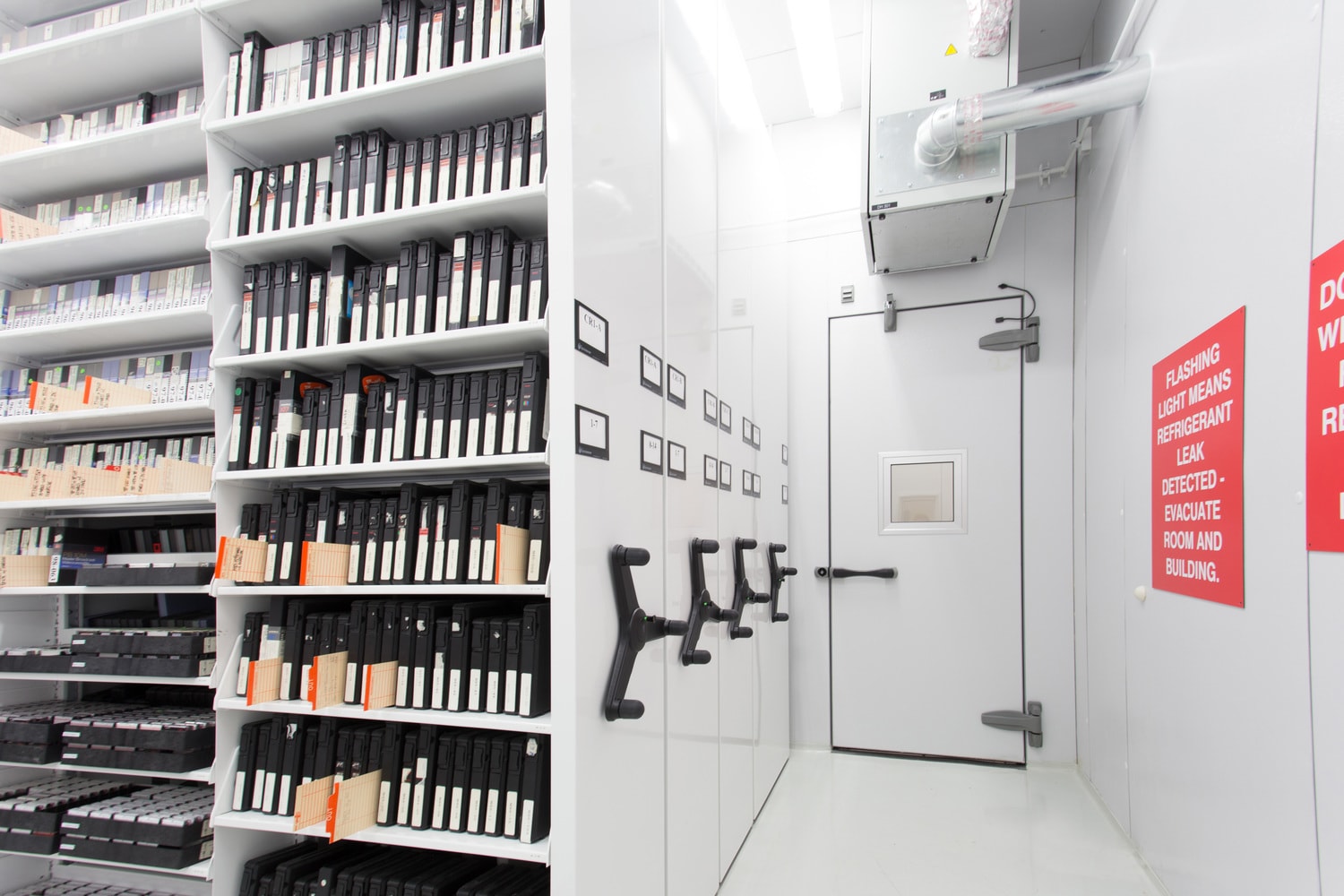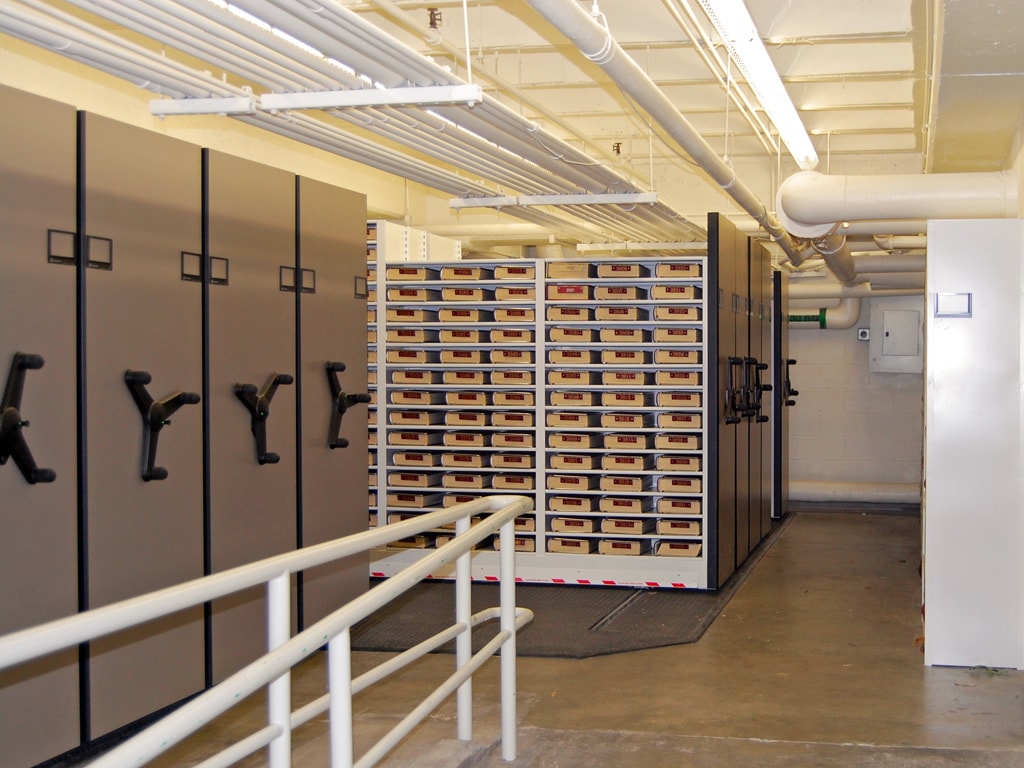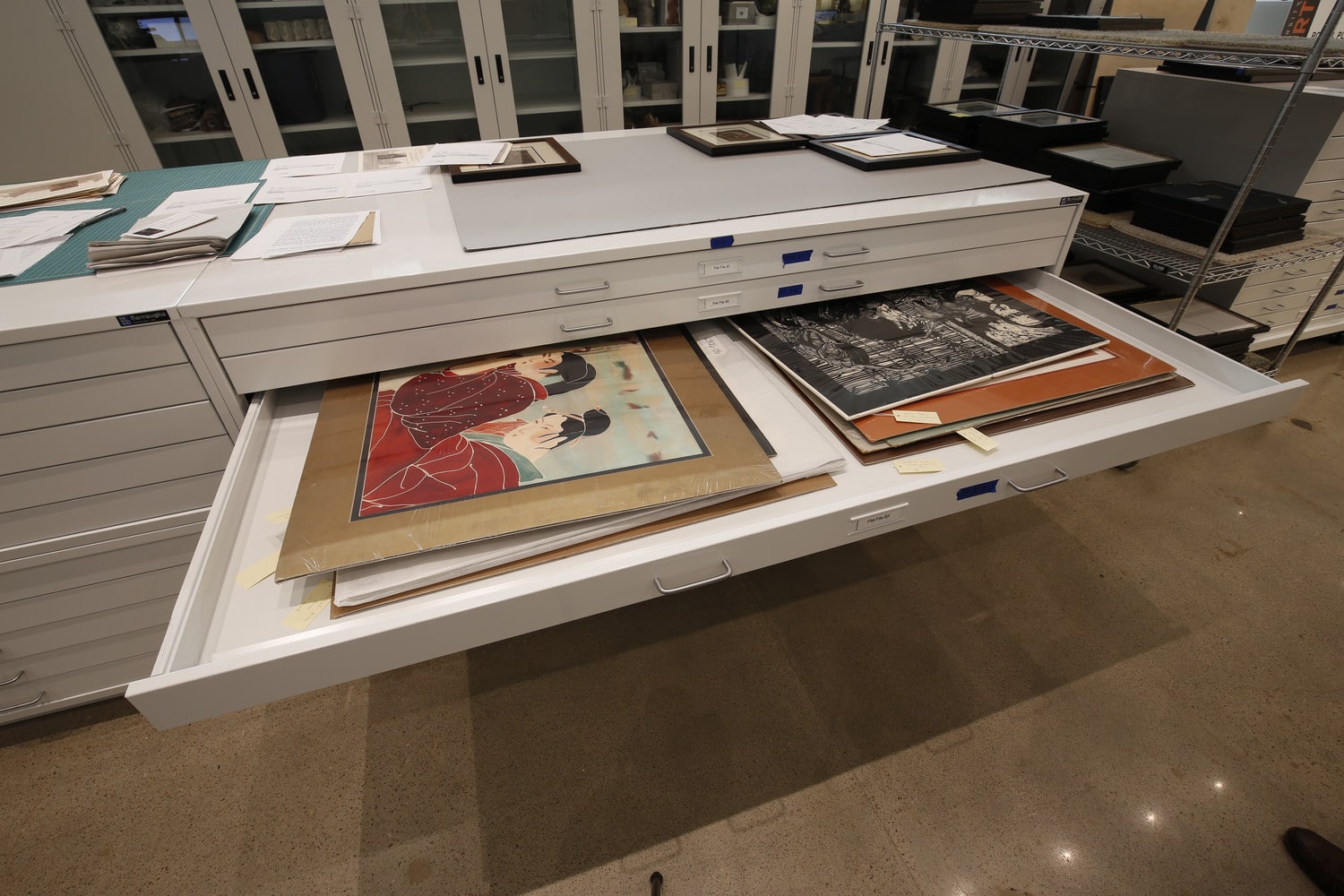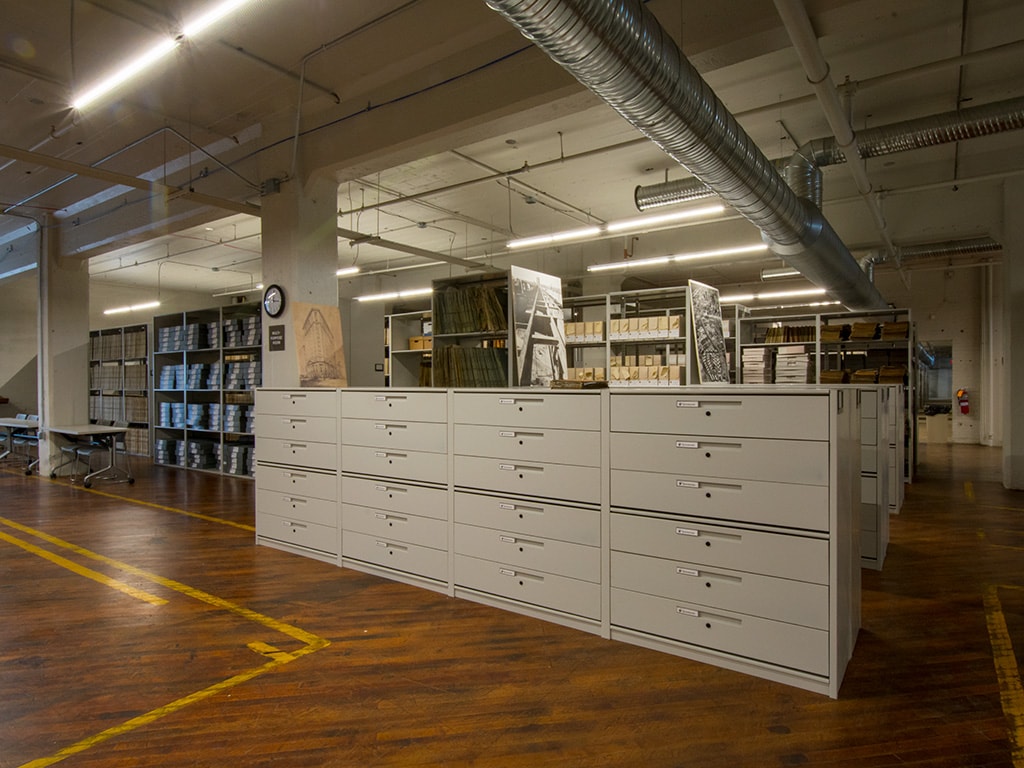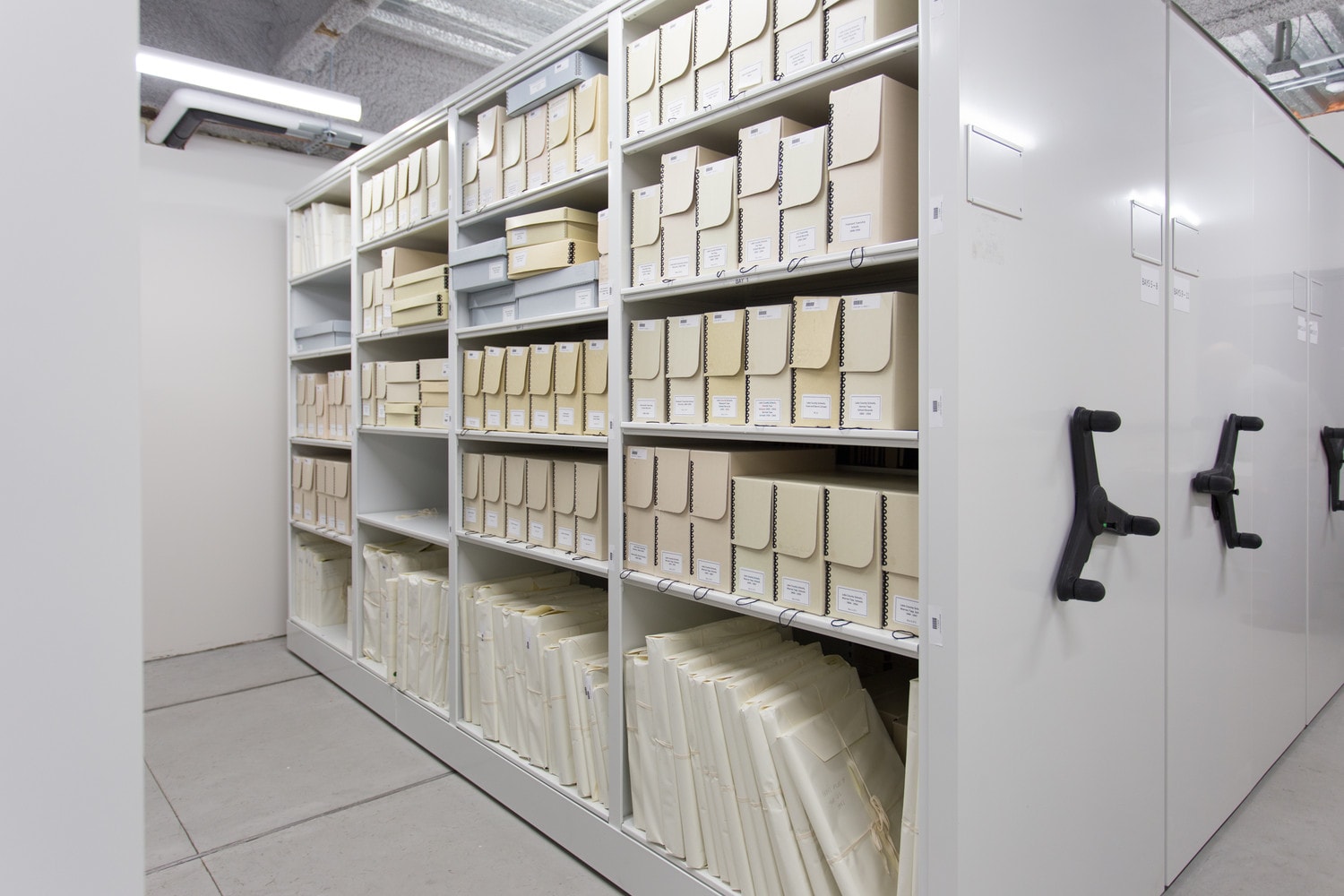Archivists are information professionals. Need to find a land grant? City record? Will? Century-old newspaper? Personal diaries of a president? Ask the archivist. Beyond providing access, archivists have another important role — securing and storing materials. Effective archive storage solutions are essential to support this specialized expertise and address the unique challenges of the field.
The Importance of Effective Archive Storage
The National Archives says it best: “Storage is the first and best means of defense in safely preserving archival holdings.”

Choosing the right storage type and methodology for long-term preservation requires archivists to address a wide range of material sizes, formats, and compositions. A deed book, for instance, will need to be organized and maintained differently than an original watercolor painting or a microfiche. Each requires specific storage conditions to prevent damage from environmental fluctuations, dust, and other hazards.
Key Considerations for Archive Storage Solutions
Archive storage systems must meet several essential requirements:
- Maximize space while protecting materials: Efficient use of space is crucial, but not at the expense of the archived items' safety and preservation.
- Flexibility to accommodate new materials: Archives are ever-growing, and storage solutions must adapt to changing needs and missions.
- Controlled access: Security is paramount to protect valuable and sensitive materials.
- Environmental monitoring: Maintaining optimal temperature and humidity levels is vital to prevent deterioration.
- Safe work environment: Archivists need a comfortable and safe workspace to manage and handle materials.
- Protection from fire and water damage: Comprehensive safety measures are necessary to safeguard the collection.
- Public access: Systems should facilitate secure and controlled areas for researchers and the public.
Despite these critical needs, archive storage often receives limited budget allocation, overshadowed by other institutional priorities such as exhibitions and administrative offices.
Successful Archive Storage Solutions
Archive storage enables efficient search and access, supports safe handling, and ultimately secures the materials for long periods of time, sometimes indefinitely. Let’s look at some solutions Patterson Pope’s experts have provided to meet the particular challenges for archive and records spaces.
Cuyahoga County Archives
The Cuyahoga County Archives had been housed in the Robert Russel Rhodes House of Cleveland, Ohio, since 1978. "The records were kept in a building addition, which would have been completed sometime between 1915 and 1917," said County Archivist Dr. Judith Cetina. "We tried to keep the records in an organized fashion...but as time went on, there just wasn't sufficient space."

Then, the county decided to divest itself of the historic mansion, and the archives moved to a spacious Midtown area warehouse the size of two football fields. It was a storage planner’s dream.
Patterson Pope's John McLaughlin undertook the project — the most extensive surveying job of his career — to design an optimal storage system for the diverse collection. His prescribed archive storage solutions included 4-Post stationary shelving and museum cabinetry, which accommodated different shelving elevations and material weights, ensuring accessibility and protection.
Wake County Register of Deeds
When the Wake Country Register of Deeds office relocated to the basement of the Justice Center in downtown Raleigh, it faced unique storage challenges, including spatial quirks and accessibility requirements.
Patterson Pope implemented high-density mobile shelving systems to organize deed books dating back nearly a century. These systems maximize space by eliminating fixed aisles, allowing for more efficient storage and easy access to materials. The storage solution kept the deed books within reach while addressing inconsistencies in ceiling heights and exposed basement pipes, facilitating both storage and retrieval.

Innovative shelving systems like those used in Wake County can be tailored to the specific needs of archival spaces. Key features include:
- Programmable opening and closing: Facilitates air circulation and ensures maximum and equal distribution of fire suppression agents.
- Smooth acceleration and deceleration: Minimizes vibration, protecting delicate materials.
- Perforated shelving and panels: Enhances airflow and reduces the risk of mold and mildew.
- Controlled lighting: Low-level, automatically controlled overhead lighting preserves light-sensitive materials.
Collect & Protect with Patterson Pope
Archival storage is often out of public view, yet it remains invaluable. Patterson Pope's expertise in providing storage for archival boxes, rare books, framed art, textiles, artifacts, and more ensures that every archive receives a customized solution. From initial space assessment and product installation to ongoing service and maintenance, Patterson Pope is committed to preserving history with innovative and reliable archive storage solutions.
Contact a storage specialist today for more information on how Patterson Pope can optimize your archive storage systems.

